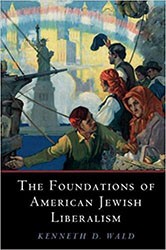Ari Joskowicz, a brilliant young professor of history, Jewish studies, and European studies at Vanderbilt University, grew up in Vienna in the 1980s with four Holocaust survivor grandparents. While they told him so many stories that he developed a visceral understanding of the gravity of their suffering, he discovered only years later that populations besides the Jews were victims of the Nazi genocide as well.
Scholars estimate that between 250,00 to 500,000 Romani people were murdered on the killing fields and in the concentration camps alongside the Jews in the Holocaust, fully one-quarter to one-half of the Romani population in Europe at the time. Yet though they were singled out for persecution, forced sterilization, deportation, and murder at the hands of the Nazi regime, their wartime suffering has remained a largely untold story.
Now, through meticulous research and an outstanding presentation, Joskowicz has brought us a book that presents a clear, flowing portrait of this understudied but deeply violated population that fundamentally alters our perception of the Holocaust, enlarging it to include the Romani victims and bringing to the fore their quest for historical justice and self-representation.
Roma is a term used to describe all “Gypsies” who came to Germany from Hungary and other parts of Eastern Europe, beginning as far back in history as the Middle Ages. It includes the Sinti population, who are considered a subgroup. Europeans feared the Romani people, and they were never accepted into European societies; many did not settle in specific communities but instead remained nomadic, which served only to strengthen their image as outsiders.
Joskowicz demonstrates how scholars, politicians, and educators can all look at the same genocide but see something different. In his view, it is the interaction between the Jewish and Romani victims, two groups that had little in common before the Holocaust, that offers a significant change in both how we understand what happened in the Holocaust and the way we deal with the complex relationship between history and memory.
The simultaneous persecution under Hitler of the Roma and the Jews gave these two disparate groups something that bound them together. And this, Joskowicz posits, gives them a critical commonality that can provide strength and unity in the fight against racism and antisemitism in today’s world.
Understanding the genocide of Europe’s Roma population — how it is entwined with the destruction of European Jews, and how each group found a way forward — profoundly effects not only commemorations of the Holocaust, but also how we define the Holocaust itself. Both points are greatly enhanced by this illuminating new book.
Linda F. Burghardt is a New York-based journalist and author who has contributed commentary, breaking news, and features to major newspapers across the U.S., in addition to having three non-fiction books published. She writes frequently on Jewish topics and is now serving as Scholar-in-Residence at the Holocaust Memorial & Tolerance Center of Nassau County.




